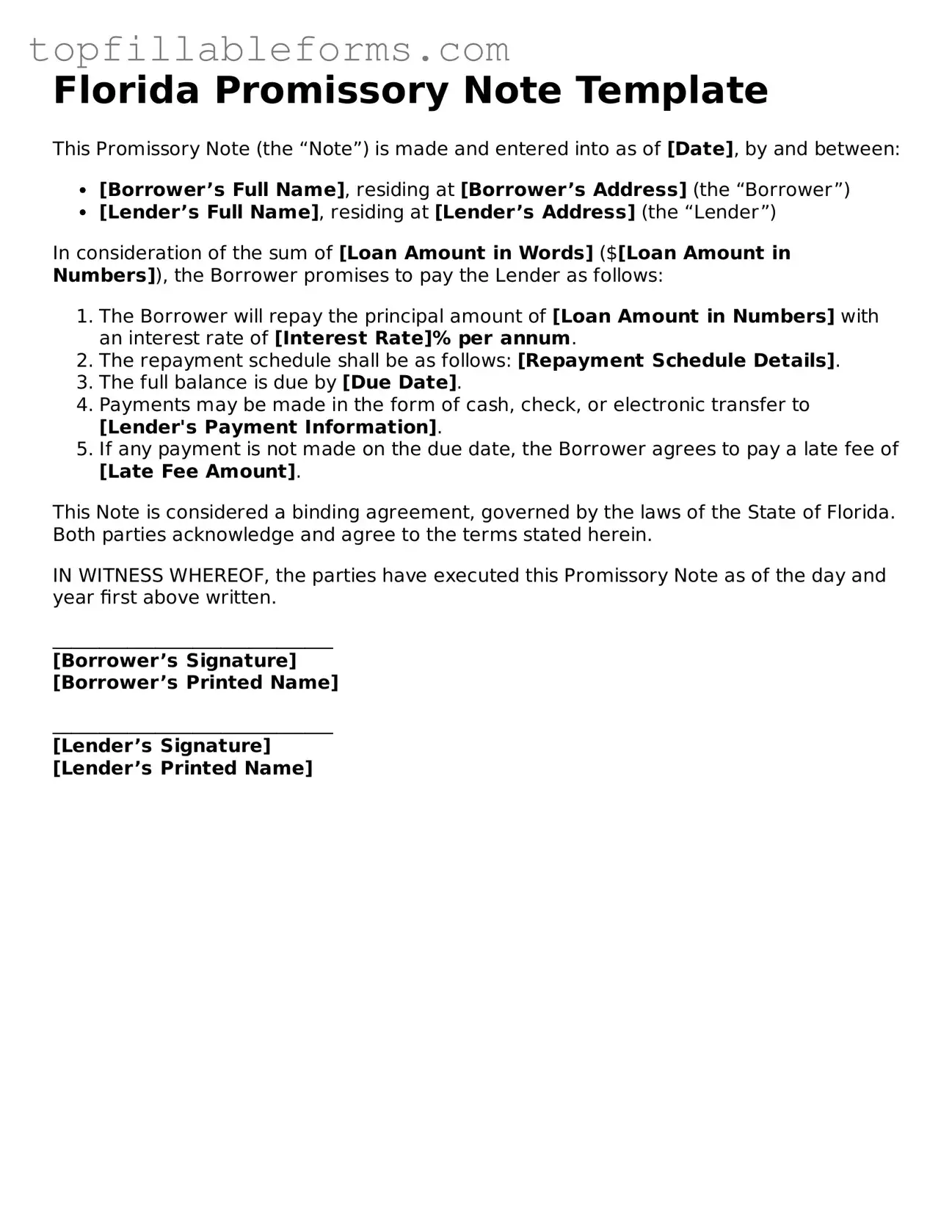Florida Promissory Note Template
This Promissory Note (the “Note”) is made and entered into as of [Date], by and between:
- [Borrower’s Full Name], residing at [Borrower’s Address] (the “Borrower”)
- [Lender’s Full Name], residing at [Lender’s Address] (the “Lender”)
In consideration of the sum of [Loan Amount in Words] ($[Loan Amount in Numbers]), the Borrower promises to pay the Lender as follows:
- The Borrower will repay the principal amount of [Loan Amount in Numbers] with an interest rate of [Interest Rate]% per annum.
- The repayment schedule shall be as follows: [Repayment Schedule Details].
- The full balance is due by [Due Date].
- Payments may be made in the form of cash, check, or electronic transfer to [Lender's Payment Information].
- If any payment is not made on the due date, the Borrower agrees to pay a late fee of [Late Fee Amount].
This Note is considered a binding agreement, governed by the laws of the State of Florida. Both parties acknowledge and agree to the terms stated herein.
IN WITNESS WHEREOF, the parties have executed this Promissory Note as of the day and year first above written.
______________________________
[Borrower’s Signature]
[Borrower’s Printed Name]
______________________________
[Lender’s Signature]
[Lender’s Printed Name]
